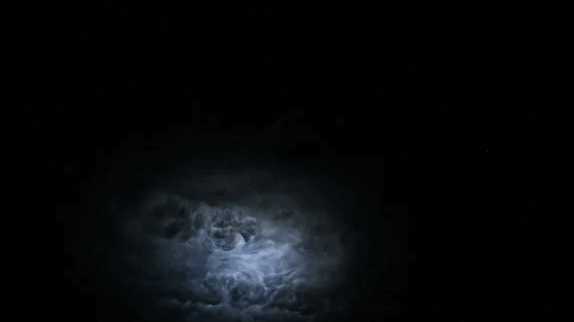When you purchase through links on our site , we may gain an affiliate direction . Here ’s how it works .
SAN FRANCISCO – Petrified lightning , or stone that have been zapped and superheated by a lightning strike , could reveal contingent about the shocking weather phenomenon , new research suggests .
Whenlightning strikes a rock , the huge jolt of current heats up the material for microseconds , vaporizes substances inside and forms a glassy rock called fulgurite , work carbon monoxide - author Jiangzhi Chen , an applied physicist at the University of Pennsylvania , said here Wednesday ( Dec. 14 ) at the annual merging of the American Geophysical Union .

Lightning strikes during a thunderstorm in Las Vegas, Nevada, on 3 January 2025.
By analyzing the bubble that form inside fulgurite , Chen and his colleagues can calculate live the material gets , and that , in turn , can give away insights into how exactly lightning works , Chen said . [ Electric Earth : Stunning Images of Lightning ]
Lightningoccurs when an electric flow is transmitted from clouds to the soil , illuminating the sky and creating dangerously high voltage . But even though this is one of the more everyday occurrences in nature , scientists understand very lilliputian about how lightning actually work .
Researchers have a variety of methods of measuring theenergy and current generated during a lightning strike , such as taking picture of the actual strike . But because lightning work stoppage are random , it can be hard to catch them in legal action . What ’s more , many of those methods can take issue by several orders of order of magnitude , Chen aver .

By direct contrast , tonic fulgurite can be easily acquired a day or two after a lightning smash . The rock is also well distinct : It has reddish patch and burn mark from the lightning strike , Chen said . Fulgurite is also filled with bubbles that form when substances such as C dioxide , water and oxygen in the rock vaporize , Chen added .
To see if they could get sympathise the temperatures and energy levels reached when lightning strikes , Chen and his colleagues cut a art object offulgurite rockfrom the top of Mount Mottarone in Italy . Chen then lightly sliced the sway , put it under a microscope , and characterized the sizing , distribution and bit of vapor bubble in the fabric .
Scientists can determine the underlying composition of the rock by measuring the frequencies of Christ Within that reflect off of it . Knowing that , combined with a model of how frequently bubbles seminal fluid at different temperatures , Chen and his colleagues can come up with an estimate of just how hot the rock got during the lightning zap , and how long it stayed hot . That , in turn , can give some understanding of the lightning strike ’s total energy , he said .

Still , there are some limitations in this estimation .
Whenlightning strikes"only a fraction of the energy is really transmitted to the rock , " Chen told Live Science . The rest gets dissipated as it electrifies the air and induce the thunder that accompanies the strikes , among other things , he say .
mighty now , the findings are a matter of pure scientific curiosity , but they could potentially make it easier to hit the books other vast shock to the Earth , such as bomb blasts and meteorite strikes .

" Those shock events are comparatively to unmanageable to meditate , but lightning bump off a target is comparatively light to find , " Chen say .
Original article onLive Science .















